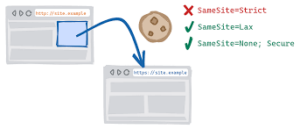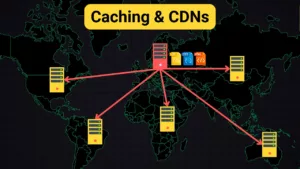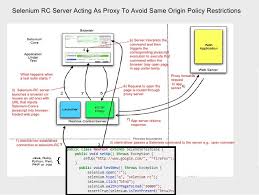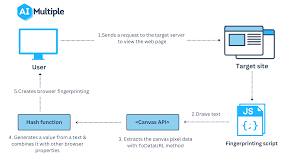To enhance the performance of web applications, one commonly employed technique is caching. Imagine you’ve already fetched a specific resource from the backend—perhaps some data or an image. If that resource is unlikely to change before your subsequent request, re-fetching it would unnecessarily consume network bandwidth. Instead, if we store that resource after our initial request, we can access it directly during subsequent requests, effectively minimising redundant network calls. This is the essence of caching.

Caching can be implemented in various locations: on the client side, within DNS systems, on servers, and even in databases (for a deeper understanding, you might find this AWS article insightful). For those working as front-end engineers, it’s not uncommon for interviewers to inquire about the HTTP caching mechanism. By the end of this article, you’ll be well-equipped to articulate your understanding when faced with the question: Can you explain how HTTP caching works? During your following interview.
HTTP Caching
To enhance the performance of web applications, one commonly employed technique is caching. Imagine you’ve already fetched a specific resource from the backend—perhaps some data or an image. If that resource is unlikely to change before your subsequent request, re-fetching it would unnecessarily consume network bandwidth. Instead, if we store that resource after our initial request, we can access it directly during subsequent requests, effectively minimising redundant network calls. This is the essence of caching.

Caching can be implemented in various locations: on the client side, within DNS systems, on servers, and even in databases (for a deeper understanding, you might find this AWS article insightful). For those working as front-end engineers, it’s not uncommon for interviewers to inquire about the HTTP caching mechanism. By the end of this article, you’ll be well-equipped to articulate your understanding when faced with the question: Can you explain how HTTP caching works? During your following interview.
Setting Up HTTP Caching
We’ve explored the advantages of HTTP caching, but how do we implement it effectively? This question often arises in interviews, and there are various methods to establish HTTP caching.
Using Expires Header
One approach involves adding an Expires directive within the HTTP Response header. For instance, you might see something like this:
`Expires: Tue, 18 Jul 2022 16:07:23 GMT`
When a browser receives this response, it first caches the data. On subsequent requests for the same resource, the browser checks if the current time has surpassed the specified Expires time. If it hasn’t, it retrieves the data directly from its cache rather than making a new request.

Opting for Cache-Control
However, since Expires is somewhat outdated, it’s less commonly used today. Most developers prefer using `cache-control`. Unlike Expires, which sets a specific expiration time for cached content, cache-control defines how long content should be considered fresh. For example:
`cache-control: max-age=60`
This line indicates that once a response is received from an initial request, any identical requests made within 60 seconds will pull data straight from the cache instead of querying the server again.
Cache-Control FAQs
Several follow-up questions frequently arise when discussing cache control in interviews. Below are some common inquiries; consider reflecting on your knowledge before reviewing the answers provided afterwards.
My goal is to ensure that only the client side caches information while preventing any intermediary layers, like a proxy server, from storing that data. What would be the appropriate approach? On the other hand, if I want the proxy server to be able to cache data coming from the backend as well, what options are available? Given that browsers often implement their caching mechanisms automatically, what should I do if I wish to avoid caching altogether and ensure that users always receive the most current content?
What would be the appropriate approach? On the other hand, if I want the proxy server to be able to cache data coming from the backend as well, what options are available? Given that browsers often implement their caching mechanisms automatically, what should I do if I wish to avoid caching altogether and ensure that users always receive the most current content?
Additionally, I’m curious about the distinctions between `cache-control: no-store` and `cache-control: no-cache`. To clarify these concepts, using `cache-control: private` allows caching solely on the client side; `cache-control: public` permits caching by both clients and intermediaries, while `cache-control: no-store` explicitly instructs against any form of caching. In contrast, `cache-control: no-cache` does allow for caching but mandates that every request must be validated with the server first. This means it will check whether there’s been an update to the server’s content each time a request is made and will use cached data only if it hasn’t changed. For further insights on this topic, you can refer to additional discussions available.
When the HTTP cache reaches its expiration, how can we re-establish authentication? As previously discussed, we can utilise the cache-control directive with a max-age setting to determine the lifespan of cached data. However, it’s important to note that even after this period ends, the data stored on the server may still be current—meaning no updates have occurred. In such cases, is there a method to continue leveraging the cached information? Indeed, this process is known as validation, and HTTP caching provides two primary mechanisms for achieving it.

The first approach involves using an ETag (Entity Tag) in the response header. This ETag serves as a unique identifier; for instance, it might look like this: ETag: 686897696a7c876b7e. Whenever there are changes in the backend data, a new ETag will be generated. When a browser subsequently requests data that includes an ETag in its response header, it appends an If-None-Match field to its request headers. Upon receiving this request, the server checks if the value of If-None-Match matches its current ETag. If they align perfectly, it indicates that no changes have been made on the backend—because any alteration would have resulted in a different ETag. Consequently, the server simply sends back a 304 Not Modified status code to inform the browser that cached data remains valid and can still be utilised. Conversely, if any modification has been detected through comparing ETAGs, fresh data will be sent instead of returning the 304 status code.
The second mechanism employs Last-Modified timestamps within response headers from the server to indicate when resources were last altered—for example Last-Modified: 2021-11-07 21:32:16.
As the server processes the incoming request that includes an If-Modified-Since header, it checks the timestamp against its records. Should it find that the resource hasn’t been updated since that time, it simply responds with a 304 Not Modified status, indicating to the client that nothing has changed. However, if there has been an update, the server will send back a 200 status along with fresh data for the client to use.
Should it find that the resource hasn’t been updated since that time, it simply responds with a 304 Not Modified status, indicating to the client that nothing has changed. However, if there has been an update, the server will send back a 200 status along with fresh data for the client to use.
How HTTP Caching Supercharges Your Browsing Speed in Maxthon
In the vast landscape of the Internet, every second counts. This is where HTTP caching comes into play, acting as a trusty sidekick to enhance your browsing experience in Maxthon. At its core, HTTP caching stores copies of web pages and resources on your device, allowing for quick access during subsequent visits.
Imagine this: you’re revisiting a website you’ve been to before. Instead of waiting for it to load from scratch, Maxthon retrieves the cached version saved earlier. This not only speeds up loading times dramatically but also reduces the strain on your internet connection.
Maxthon harnesses the power of intelligent algorithms to optimise caching, significantly enhancing your browsing experience. By carefully selecting which elements—such as images, scripts, and stylesheets—are stored locally, it ensures that every page you visit loads swiftly and efficiently.

This meticulous approach minimizes unnecessary delays, allowing users to navigate seamlessly from one webpage to another. Each element is strategically cached to reduce load times, making for an uninterrupted online journey.
Maxthon understands that in the fast-paced world of the internet, fresh content is essential. Users crave timely and relevant information, and Maxthon rises to this challenge with impressive efficiency.
When server instructions signal that cache data has become outdated, the browser springs into action. It automatically refreshes this information without requiring any input from you, ensuring that you always access the latest updates and insights.
Gone are the days of manual refreshing or worrying about stale content. Maxthon’s proactive management system alleviates these concerns, allowing you to focus on your browsing experience.
With its sophisticated caching system in play, Maxthon provides a smooth and dynamic web interaction tailored to your needs. You can navigate confidently, knowing that your browser is working diligently behind the scenes to deliver reliability and speed. In a digital landscape where time is precious, Maxthon ensures you’re always ahead of the curve.

Ultimately, HTTP caching transforms how we interact with digital content. It turns arduous waits into instant gratification—keeping users engaged and satisfied while navigating the boundless realms of the web. In this way, Maxthon champions speed and efficiency, ensuring that moments spent online are smoother than ever before.
